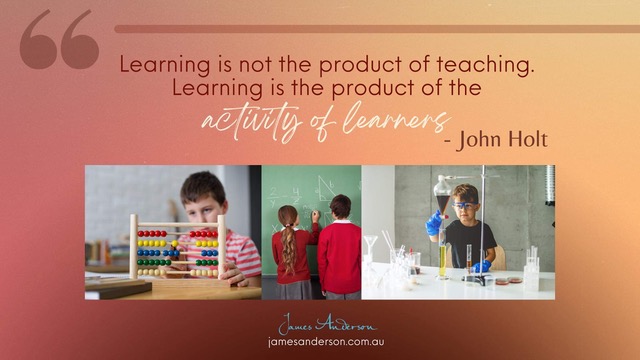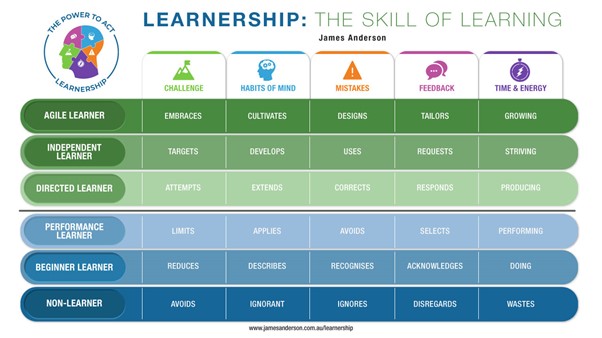How to Beat Teacher Burnout
When I worked as a teacher, I was given an incredibly useful, insightful and simple piece of advice. Never work harder than your students.
This is important advice because as teachers we work hard. We push ourselves. We care and we fret. We’re constantly learning and striving to give the students in our care the best educational experience. But all this can lead to burnout. And when teachers are burned out, the children suffer as well.

We’ve Been Focused on the Teachers
In recent years our industry has been increasingly focused on what teachers do in the classroom. We’ve created the Australian Professional Standards for Teachers framework. John Hattie—professor of education and the director of the Melbourne Education Research Institute at the University of Melbourne—has had his work translated into High Impact Teaching Strategies for teachers. And educational researchers like Bob Marzarno have been busy telling us What Works in Schools.
Yet all this research, data and information has told us one important thing (that we already knew)—that it’s teachers who work in schools!
Of course, all this research is very good. We need to know what the most skilful and effective teachers do in classrooms so that we can replicate it across the board. And, for the most part, the research shows us that teachers are working hard and doing a great job! In fact, we have some of the most skilful teachers in the world in our schools.
But by placing such a large emphasis on what teachers should be doing, are we losing sight of what our students should be doing?
We Should Focus on the Students
Without a doubt having professional standards and requirements for teachers is vital for a robust educational system. But what expectations are we putting on the students? Where are the "professional standards for learners?" What are the students’ "high impact learning strategies? Where are our exemplar students and how do we define how they go about gaining exceptional learning?
It was the American educator John Holt who said, "Learning is not the product of teaching. Learning is the product of the activity of learners." Holt reminds us that we can be the most skilful teachers in the world, but how we teach is only half the equation. Students need to engage in the learning process at least as skilfully as their teachers, in order for effective for learning to occur.
This is important advice because as teachers we work hard. We push ourselves. We care and we fret. We’re constantly learning and striving to give the students in our care the best educational experience. But all this can lead to burnout. And when teachers are burned out, the children suffer as well.

We’ve Been Focused on the Teachers
In recent years our industry has been increasingly focused on what teachers do in the classroom. We’ve created the Australian Professional Standards for Teachers framework. John Hattie—professor of education and the director of the Melbourne Education Research Institute at the University of Melbourne—has had his work translated into High Impact Teaching Strategies for teachers. And educational researchers like Bob Marzarno have been busy telling us What Works in Schools.
Yet all this research, data and information has told us one important thing (that we already knew)—that it’s teachers who work in schools!
Of course, all this research is very good. We need to know what the most skilful and effective teachers do in classrooms so that we can replicate it across the board. And, for the most part, the research shows us that teachers are working hard and doing a great job! In fact, we have some of the most skilful teachers in the world in our schools.
But by placing such a large emphasis on what teachers should be doing, are we losing sight of what our students should be doing?
We Should Focus on the Students
Without a doubt having professional standards and requirements for teachers is vital for a robust educational system. But what expectations are we putting on the students? Where are the "professional standards for learners?" What are the students’ "high impact learning strategies? Where are our exemplar students and how do we define how they go about gaining exceptional learning?
It was the American educator John Holt who said, "Learning is not the product of teaching. Learning is the product of the activity of learners." Holt reminds us that we can be the most skilful teachers in the world, but how we teach is only half the equation. Students need to engage in the learning process at least as skilfully as their teachers, in order for effective for learning to occur.

From Passive to Active Learners
Too many of our learners are passive learners. They take little or no responsibility for their own learning and need to be led (or often dragged) through the learning process. And that leaves teachers doing all the hard work in the classroom. What could be a joyfully collaborative and beneficial process becomes draining (mentally and physically) on our teachers who go home exhausted as a result.
The Solution
So what’s the answer? How do we help students engage more effectively in the learning process? How do we stop teachers from working harder than their students?
The answer begins by understanding and defining what skilful learning looks like. We need a set of standards, a description of what it looks like to become an increasingly skilful learner. And we need to define the skill of learnership. These skills are vital for our students. But without guidance, they won’t understand how to become skilful learners. Or how to grow that skill over time.
Learnership Matrix

My Learnership Matrix helps to answer those questions. It defines skilful learning. And it sets the "Professional Standards for Learning" for students to follow.
The schools I’m working with that are implementing the Learnership Matrix are finding their students to be more effective and skilful learners through the development of "learnership". These schools are helping students embrace challenges and get comfortable with the discomfort that comes with being in their learning zone. They are showing students how to focus not just on what they are learning, but also on how they are learning. And the students are developing their Habits of Mind, learning problem solving and life-related skills.
These schools are helping students improve how they engage in the learning process and in doing so are moving them towards becoming Agile Learners.
As students develop learnership, they take on increasing responsibility for their own learning. They no longer need to be led through the learning process by a tired and overworked teacher. Instead, they take on some of that burden themselves and, as a result, the learning load is shared more evenly between teacher and student.
Don't Work Harder, Help Your Students Work Smarter
As the school year starts, I think it’s useful to be reminded that teachers should never work harder than their students. That doesn’t mean we should slack off. It means that instead of working harder, we achieve greater learning outcomes for students by helping them become more skilful learners.
In other words, we help our students to work smarter.
Learn more about how to develop learnership in your school.
Watch this recorded webinar on Learnership
Download Free Learnership Resources on my website
Learn how Learnership is critical to your work with Learner Agency
Register for the 4-Day Learnership Intensive beginning May 31st
Book a time in my calendar to talk about how I can work directly with your school.
Best Wishes,
James
Stay connected with news and updates!
Join my mailing list to receive the latest news and updates about mindset, Habits of Mind, Learning Agility and more.
